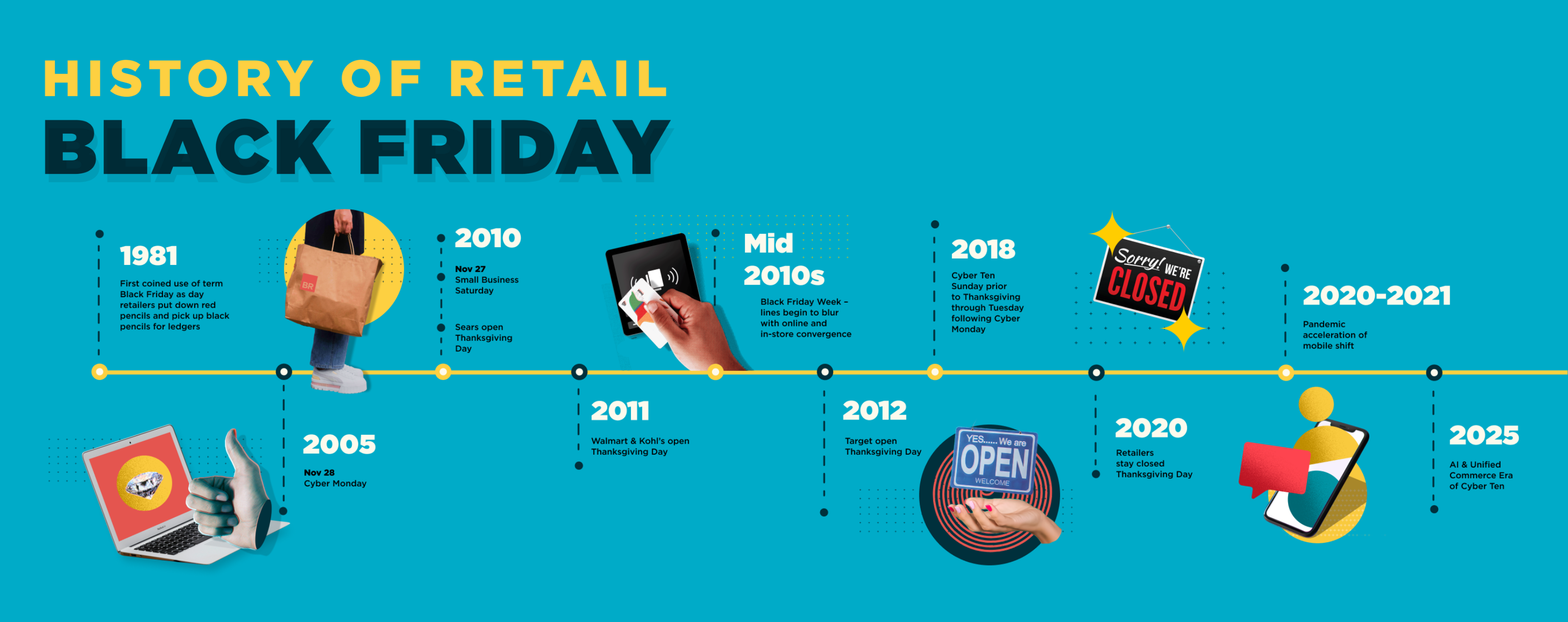Origins and Rebranding of Black Friday
The term “Black Friday” first referred to an 1869 financial crisis and was later used by Philadelphia police in the 1950s-60s to describe post-Thanksgiving shopping chaos. Retailers rebranded it in the 1980s as the day stores became profitable, with stores moving from using red ledger pencils to black and shifting the perception of the “Black Friday” moniker to the positive.
Cyber Monday
Coined in 2005, Cyber Monday emerged as the online equivalent to Black Friday. It was created to encourage people to shop online, capitalizing on the high-speed internet connections available at work after Thanksgiving weekend. Initially, it was a distinct online event with its own set of deals, often focused on electronics.
Blurring of Lines to “Cyber Week”
As e-commerce grew, consumer behavior shifted to online purchases. Retailers responded by offering Black Friday-level deals online, extending sales periods to capture more transactions, ultimately creating a week-long sales period extending from Thanksgiving Day through Cyber Monday, no longer confining sales to single days.
Extending to “Cyber Ten”
While Black Friday began as a singular in-store event after Thanksgiving, the further extension of retail sales took advantage of the online shopping frenzy, opening up the window the Sunday before Thanksgiving and concluding the Tuesday after Cyber Monday – now terming the promotional window “Cyber Ten.”
Thanksgiving Day Open and Closed
As share of wallet battles continued, retailers looked for more aggressive ways to grab early sales. In the early 2010’s, major retailers began opening on Thanksgiving Day, capturing early shoppers and proving effectiveness in driving sales. This, however, changed significantly in 2020, driven by safety measures around the pandemic, many retailers closed stores on Thanksgiving Day, meeting positive feedback from employees and consumers.
The Future
As we look ahead to 2025, the forecast for holiday sales will be driven by consumer demand and experience. Cyber Monday is expected to surpass Black Friday in online sales (again), with the Cyber Ten period capturing the majority of holiday spend. Mobile shopping will continue to dominate, promotions will start earlier, and technologies like AI and Buy Now, Pay Later (BNPL) will influence consumer behavior.
To be successful, retailers must meet consumer demands to achieve consistent annual growth and end the year profitably. That includes managing inventory, setting competitive prices, offering in-demand items, and providing transparent personalization.
Consumers will focus on managing their schedules, wish lists, and budgets. Longer sales periods often lead to steady purchases as shoppers seek early-bird and last-minute deals. However, economic predictions suggest lower spending levels for 2025, and time will tell how effectively AI and tracking tools will help consumers balance wants and needs and manage spending.
Black Friday will continue to be the day that attracts the majority of our attention while Cyber Monday will take the majority of consumers’ pocketbooks. The question remains, how much will AI dominate the way consumers search, discover, compare and transact, and which retailers will provide the most personalized, transparent and trustworthy tools.







